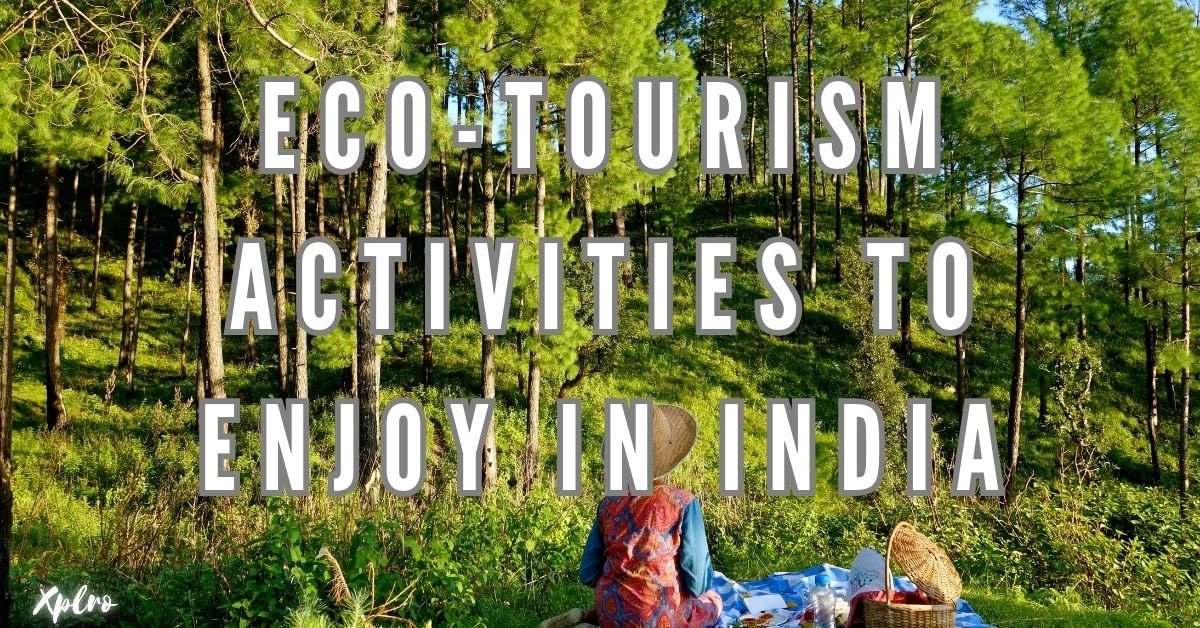Eco-Tourism Activities to Enjoy in India; India, a land of stunning landscapes and rich cultural heritage, offers a wealth of eco-tourism experiences. From the serene backwaters of Kerala to the majestic Himalayas, India provides opportunities for sustainable travel. Explore the Western Ghats, a UNESCO World Heritage Site, and trek through its misty mountains. Cruise through the tranquil backwaters of Kerala on a traditional houseboat, or embark on a wildlife safari in Ranthambore National Park to spot majestic tigers. For adventure enthusiasts, the Himalayas offer challenging treks with breathtaking views. Birdwatchers can delight in the diverse avian life at Bharatpur Bird Sanctuary, while volunteers can contribute to wildlife conservation efforts. Eco-friendly beach holidays in Goa, camel safaris in the Thar Desert, and boat safaris in the Sundarbans offer unique experiences. Immerse yourself in the spiritual and healing practices of yoga and Ayurveda in Rishikesh. By choosing eco-friendly activities and supporting local communities, you can contribute to India’s sustainable tourism efforts.
- 1. Wildlife Safaris in National Parks
- 2. Backwater Houseboat Cruising in Kerala
- 3. Village Homestays and Rural Tourism
- 4. Mountain and Nature Treks
- 5. Bird Watching in Biodiversity Hotspots
- 6. Exploring Mangroves and Coastal Eco-Tourism
- 7. Organic Farm Tours and Agri-Tourism
- 8. Forest Therapy and Nature Walks
- 9. Desert Camping and Camel Safaris
- 10. Scuba Diving and Coral Conservation in Andaman and Nicobar
- FAQs
1. Wildlife Safaris in National Parks
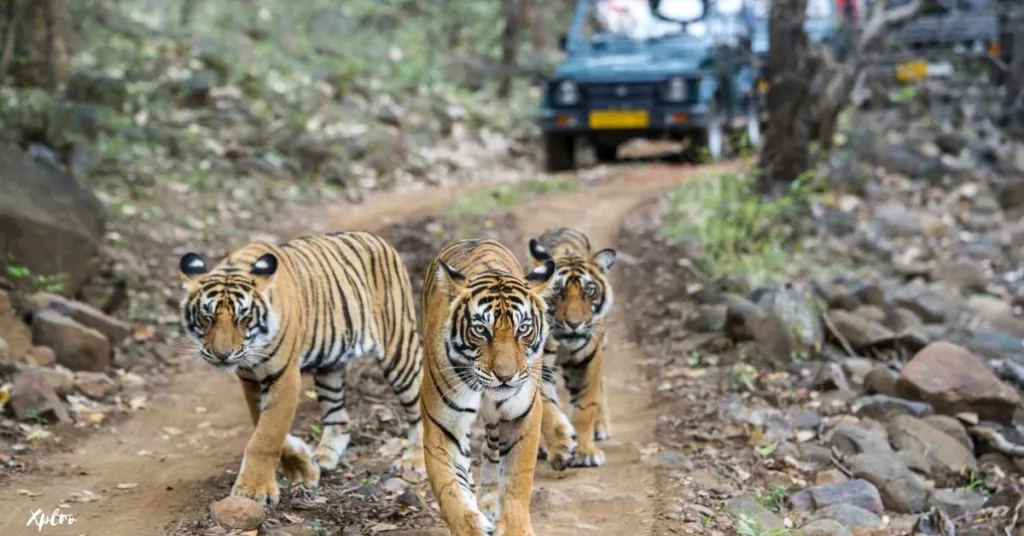
India’s diverse wildlife is a global treasure, and exploring national parks through eco-friendly safaris is a fantastic way to experience it. Instead of traditional safari vehicles, consider guided walking tours or silent electric vehicles, which minimize disturbance to the animals.
Here are some popular national parks to explore:
- Jim Corbett National Park, Uttarakhand: Known for its Bengal tigers and elephants.
- Kaziranga National Park, Assam: A UNESCO World Heritage Site famous for its one-horned rhinoceroses.
- Sundarbans National Park, West Bengal: Home to the Royal Bengal Tiger and the world’s largest mangrove ecosystem.
These safaris not only offer thrilling wildlife encounters but also contribute to wildlife conservation and raise awareness about endangered species.
2. Backwater Houseboat Cruising in Kerala
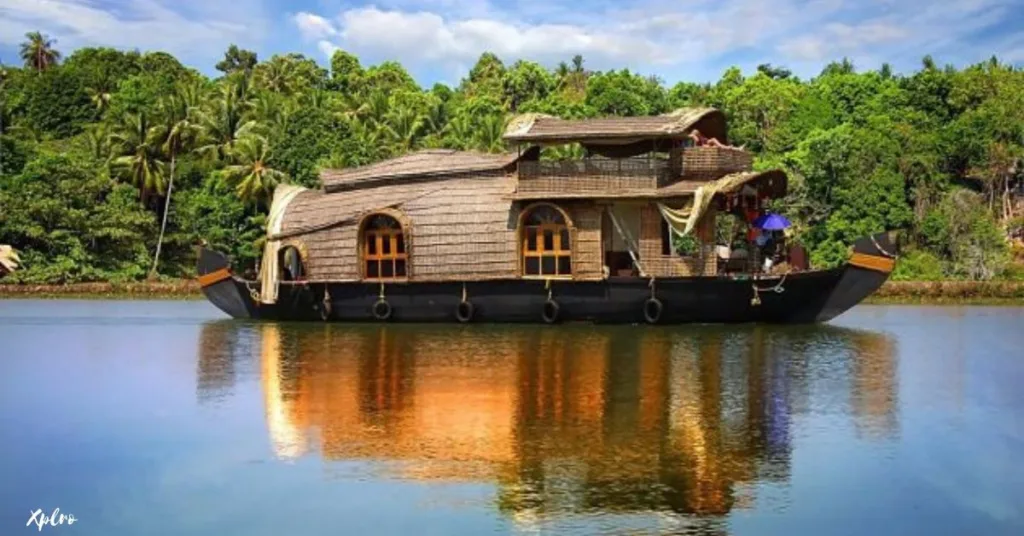
Kerala’s backwaters are a network of tranquil waterways that wind through lush landscapes and charming villages. Exploring these serene backwaters on eco-friendly houseboats is a unique and sustainable way to experience Kerala’s natural beauty.
These houseboats are designed to minimize their impact on the environment, using solar energy, bio-toilets, and organic waste management systems. Some popular destinations for backwater cruises include:
- Alleppey and Kumarakom: These regions offer a glimpse into traditional village life, lush paddy fields, and diverse flora and fauna.
By choosing to stay on these eco-friendly houseboats, you not only enjoy a relaxing and rejuvenating experience but also contribute to the preservation of Kerala’s natural beauty and support local livelihoods.
3. Village Homestays and Rural Tourism
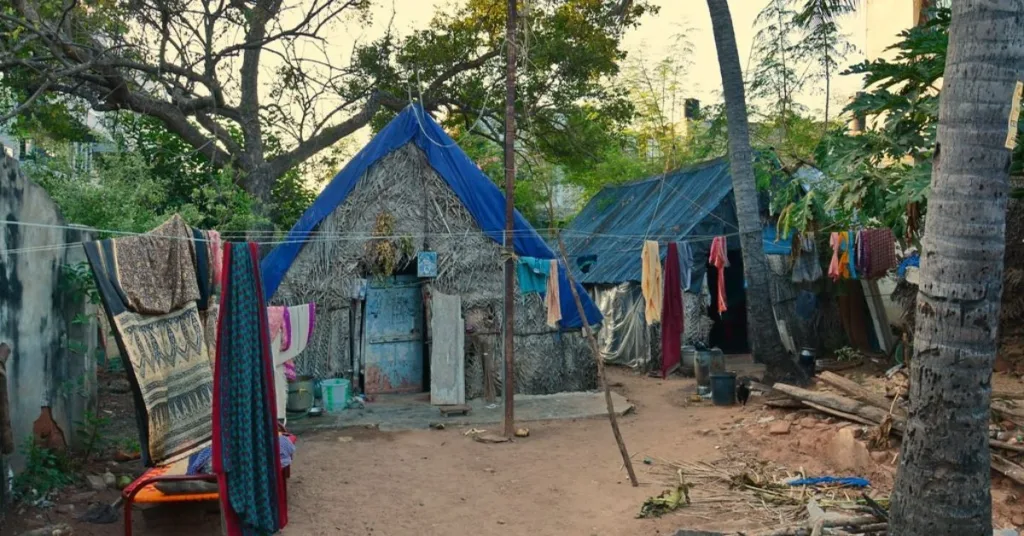
Immerse yourself in the heart of India’s countryside and experience the warmth of rural hospitality. Eco-friendly homestays offer a unique opportunity to explore traditional lifestyles, connect with local communities, and contribute to sustainable practices.
Popular Destinations for Rural Eco-Tourism:
- Hodka Village, Gujarat: Immerse yourself in the vibrant world of handicrafts and learn about sustainable tourism initiatives.
- Kumaon Villages, Uttarakhand: Explore the breathtaking Himalayan landscapes and experience the rich cultural heritage of the region.
These homestays prioritize eco-friendly practices, utilizing local resources, renewable energy, and sustainable waste management. By choosing these accommodations, you can enjoy a meaningful cultural exchange while supporting sustainable tourism.
4. Mountain and Nature Treks
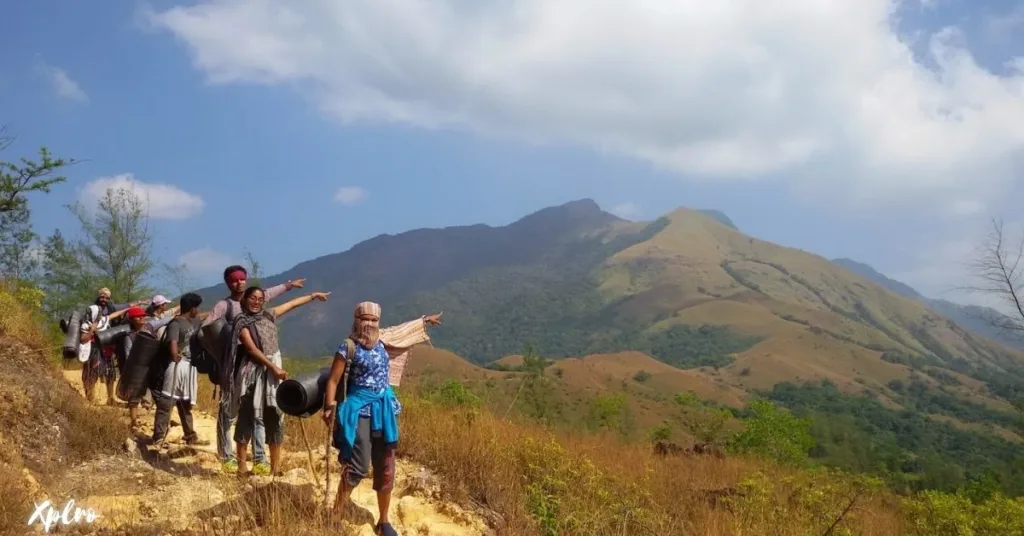
India’s diverse mountain ranges, including the majestic Himalayas, the Western Ghats, and the ancient Aravalli Hills, offer a plethora of opportunities for eco-conscious trekking. These trails allow travelers to connect with nature without compromising its pristine beauty.
To ensure minimal environmental impact, many trekking routes enforce strict regulations, such as limiting visitor numbers and adhering to “Leave No Trace” principles.
Must-Try Eco-Friendly Treks:
- Valley of Flowers, Uttarakhand: A UNESCO World Heritage Site renowned for its breathtaking floral diversity and serene landscapes.
- Hampta Pass, Himachal Pradesh: A challenging yet rewarding trek that offers stunning panoramic views of snow-capped peaks and lush valleys.
By choosing these eco-friendly treks, you not only experience the wonders of nature but also contribute to the sustainable development of local communities.
5. Bird Watching in Biodiversity Hotspots
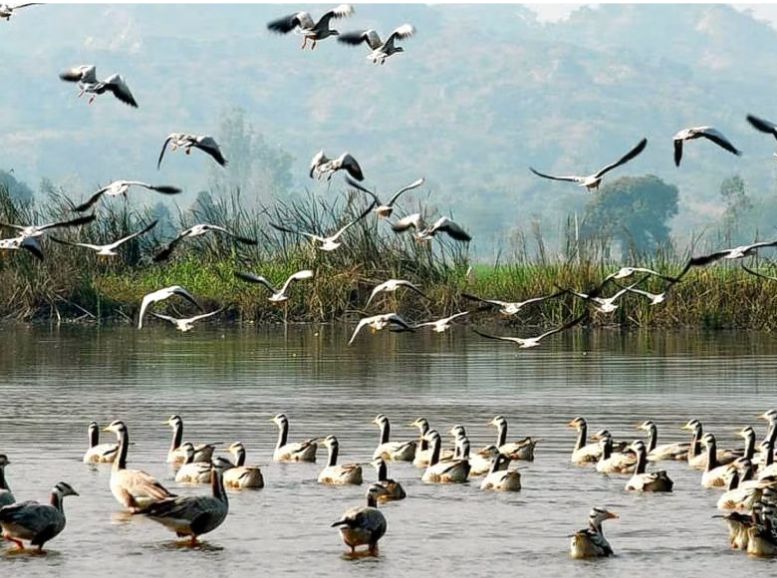
India’s diverse landscapes, from the wetlands of the Ganges Delta to the Himalayan foothills, provide a haven for over 1,200 bird species. Birdwatching in India offers a unique opportunity to witness a stunning array of feathered wonders, from vibrant peacocks to elusive migratory birds.
Key Birdwatching Destinations in India:
- Keoladeo National Park, Rajasthan: A UNESCO World Heritage Site, this park is renowned for its diverse birdlife, especially during the winter migratory season.
- Bharatpur Bird Sanctuary, Rajasthan: Another birder’s paradise, this sanctuary is home to a variety of resident and migratory birds.
- Mangalajodi Wetlands, Odisha: This picturesque wetland ecosystem is a haven for a wide range of waterbirds, including migratory waterfowl.
By participating in birdwatching tours led by knowledgeable local guides, you can gain insights into the intricate ecosystems and conservation efforts. This low-impact activity not only enriches your travel experience but also contributes to the preservation of these precious habitats.
6. Exploring Mangroves and Coastal Eco-Tourism
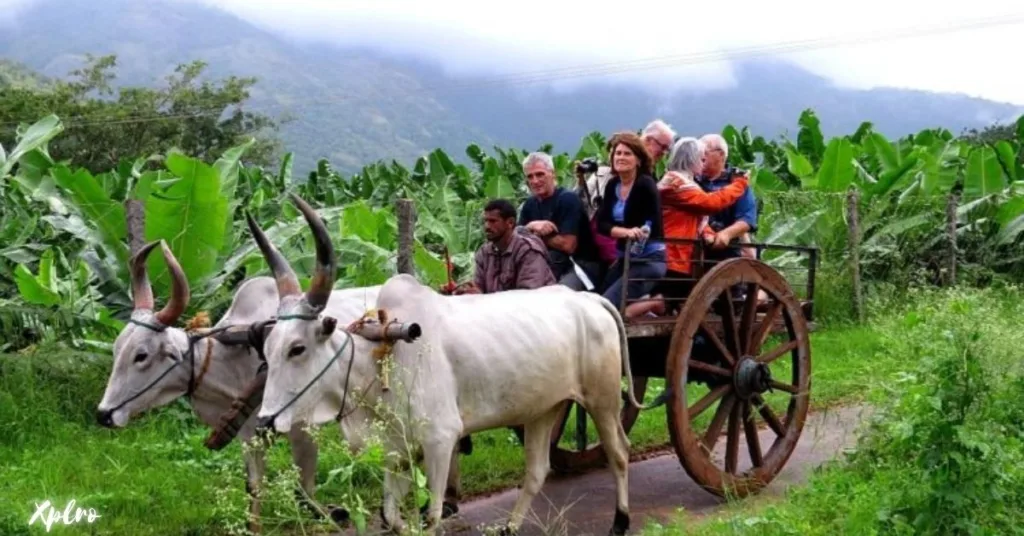
India’s coastal regions are adorned with lush mangrove forests, which play a crucial role in maintaining ecological balance and protecting coastal communities. These intricate ecosystems provide a sanctuary for a diverse range of wildlife, including endangered species like the Royal Bengal Tiger.
To experience the beauty and ecological significance of mangroves, consider these sustainable activities:
- Mangrove Kayaking in Kerala and the Andaman Islands: Paddle through serene waterways, surrounded by lush mangrove forests. This unique perspective allows you to witness the intricate details of the ecosystem and its diverse inhabitants.
- Boat Tours in the Sundarbans: Embark on a boat tour through the world’s largest mangrove forest. Keep an eye out for the majestic Royal Bengal Tiger, elusive crocodiles, and a variety of bird species.
By participating in these eco-friendly activities, you can contribute to mangrove conservation and gain a deeper appreciation for the delicate balance of these vital ecosystems.
7. Organic Farm Tours and Agri-Tourism

Agri-tourism offers a unique opportunity to connect with nature and learn about sustainable farming practices. By combining eco-tourism with organic agriculture, these experiences allow visitors to engage in hands-on activities like planting, harvesting, and even cooking with fresh, organic produce.
Popular Agri-Tourism Destinations in India:
- Sula Vineyards, Maharashtra: Immerse yourself in the world of organic winemaking and savor the flavors of India’s finest wines.
- Dharamshala, Himachal Pradesh: Explore the serene tea plantations and learn about the art of organic tea production.
By choosing agri-tourism, you not only support local farmers but also contribute to the promotion of eco-friendly agricultural practices.
8. Forest Therapy and Nature Walks
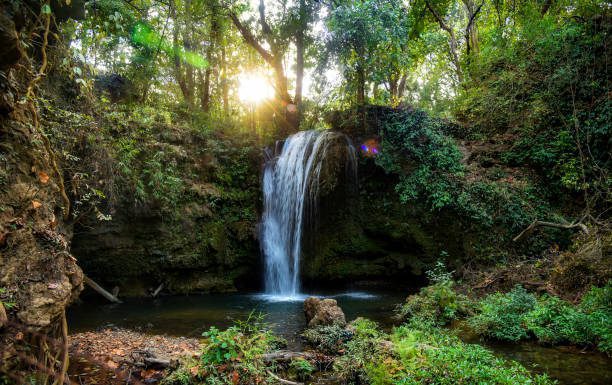
Inspired by the Japanese practice of “Shinrin-yoku” or “forest bathing,” forest therapy offers a serene escape into nature. By immersing oneself in the tranquility of a forest, individuals can experience numerous mental and physical health benefits.
India boasts several pristine forests and eco-parks that are perfect for forest therapy:
- Silent Valley National Park, Kerala: This pristine evergreen forest offers a serene escape, allowing visitors to connect with nature’s tranquility.
- Matheran Hill Station, Maharashtra: An automobile-free zone, Matheran provides a peaceful environment for leisurely walks and nature exploration.
Guided nature walks in these forests not only offer a relaxing experience but also foster a deeper appreciation for the environment, promoting awareness of the importance of preserving natural habitats.
9. Desert Camping and Camel Safaris

Embark on a sustainable adventure through the vast expanse of the Thar Desert. Eco-friendly camel safaris offer a unique opportunity to explore this arid landscape while minimizing your environmental impact.
Popular Destinations for Desert Safaris:
- Jaisalmer, Rajasthan: Experience the magic of the desert with eco-friendly camping options and guided camel safaris.
- Bikaner and Pushkar: Immerse yourself in the rich cultural heritage of Rajasthan and witness the grandeur of traditional camel festivals.
By choosing eco-friendly options and following responsible tourism practices, you can contribute to the preservation of this fragile ecosystem. Local guides, with their deep knowledge of the desert, can provide insights into the unique flora and fauna, ensuring a truly authentic and sustainable experience.
10. Scuba Diving and Coral Conservation in Andaman and Nicobar

India’s Andaman and Nicobar Islands are home to stunning coral reefs, perfect for scuba diving enthusiasts. These reefs offer a vibrant underwater world with diverse marine life.
To protect these fragile ecosystems, eco-friendly diving centers have emerged. They prioritize minimizing harm to marine life and actively participate in coral conservation efforts. These efforts aim to restore damaged reefs and safeguard the rich biodiversity of the region.
Two popular destinations for scuba diving and coral conservation are:
- Havelock Island: Known for its crystal-clear waters and abundant coral reefs.
- Neil Island: Renowned for its dedicated coral conservation initiatives.
By choosing sustainable diving practices and supporting coral restoration projects, travelers can contribute to preserving India’s marine ecosystem for future generations.
Conclusion – Eco-Tourism Activities to Enjoy in India
Immerse yourself in India’s vibrant tapestry with eco-tourism! This unique approach to travel blends breathtaking natural wonders with cultural heritage, all while adhering to sustainable practices. From thrilling wildlife safaris to serene forest hikes and immersive local experiences, eco-tourism allows you to become a responsible traveler. Your choices directly contribute to biodiversity conservation, support local communities, and promote a positive impact on the environment. Eco-tourism isn’t just a vacation; it’s a commitment to preserving India’s magic for generations to come. Explore further and plan your eco-adventure with Xplro.com! Discover a treasure trove of eco-tourism guides, tips, and itineraries to craft a responsible and unforgettable journey through India’s diverse landscapes and rich cultures.
FAQs
1. What is eco-tourism, and why is it essential in India?
- Eco-tourism is a form of responsible travel that emphasizes preserving natural areas and supporting local communities. In India, where biodiversity is both vast and fragile, eco-tourism plays a critical role in environmental conservation. By focusing on sustainability, eco-tourism helps protect the country’s natural ecosystems, promotes wildlife conservation, and provides economic support to local communities, allowing them to sustain their cultural practices and traditional livelihoods.
2. Which are some top eco-tourism destinations in India?
- India boasts numerous destinations ideal for eco-tourism, with each region offering a unique environment and wildlife experience. Kaziranga National Park in Assam is well-known for its one-horned rhinoceroses, while Kerala’s backwaters provide tranquil, eco-friendly houseboat experiences. The Sundarbans in West Bengal offer a chance to explore the mangrove forests and witness the majestic Royal Bengal Tiger. Meanwhile, Spiti Valley in Himachal Pradesh has become a popular destination for eco-conscious mountain travelers, with sustainable lodges and community-based tourism initiatives.
3. What types of eco-friendly activities are available for travelers in India?
- India offers a wide range of eco-friendly activities for travelers who want to minimize their impact. Wildlife safaris in electric or silent vehicles, available in some national parks, allow visitors to enjoy the country’s rich biodiversity without disturbing the animals. Trekking and nature walks are popular in the Himalayan and Western Ghats regions, and many trails encourage responsible tourism practices. Village homestays provide a unique experience of rural life and help support local families. Additionally, birdwatching in sanctuaries such as Bharatpur Bird Sanctuary promotes the appreciation of native and migratory species.
4. How does eco-tourism benefit local communities in India?
- Eco-tourism directly supports local communities by creating jobs and promoting the culture, crafts, and traditions of indigenous and rural people. Local guides, artisans, and homestay hosts often play a central role, ensuring that the economic benefits stay within the community. This not only improves the quality of life for these communities but also fosters a sense of pride in their culture and traditions. Many eco-tourism destinations in India aim to offer sustainable livelihoods, which reduces the dependence on environmentally harmful practices.
5. Are there eco-friendly accommodations in India?
- India has a growing number of eco-friendly accommodations that prioritize sustainability. In Kerala, houseboats designed with solar power, bio-toilets, and eco-friendly waste systems allow visitors to explore the backwaters without polluting them. Eco-resorts in the Himalayan region use locally sourced materials and renewable energy, while village homestays, such as those in Sikkim and Hodka (Gujarat), support local families and follow sustainable practices. These accommodations are ideal for travelers looking to minimize their footprint while immersing themselves in India’s natural beauty.
6. How can I reduce my environmental impact during eco-tourism activities?
- To reduce your environmental impact, consider packing light and using eco-friendly products. Avoiding single-use plastics and carrying reusable items like water bottles and shopping bags is key. Sticking to designated trails during nature activities prevents damage to natural habitats. Choosing local accommodations and supporting local businesses also promotes sustainable practices in the region. Additionally, practicing “Leave No Trace” principles, such as packing out your waste, helps preserve the environment for future visitors.
7. Are there eco-friendly trekking options available?
- India offers several eco-friendly trekking routes where travelers are encouraged to follow sustainable tourism practices. In Uttarakhand, the Valley of Flowers Trek limits visitor numbers to protect its diverse flora, while the Hampta Pass Trek in Himachal Pradesh emphasizes responsible camping and waste disposal. For those interested in off-the-beaten-path treks, the Nilgiri Hills in Tamil Nadu offer a peaceful, scenic experience with a strong focus on protecting the region’s biodiversity. These trekking destinations encourage travelers to connect with nature responsibly.
8. When is the best time to plan an eco-tourism trip in India?
- The best time for eco-tourism in India depends on the region and the type of experience you are seeking. For wildlife safaris, the period from October to March is ideal as most national parks are open and animal sightings are more frequent. For Himalayan trekking, the best months are April to June and September to November, when weather conditions are mild. Kerala’s backwaters are most pleasant from October to March, while desert activities in Rajasthan are best enjoyed between November and February. Aligning your visit with these seasons ensures a comfortable trip and often provides the most vibrant natural scenery.
9. Are eco-tourism activities safe in India?
- Eco-tourism activities in India are generally safe when conducted with certified guides and trusted operators. Following safety guidelines, such as listening to instructions during wildlife safaris, sticking to marked trails on treks, and respecting local customs, adds an extra layer of safety. Choosing licensed tour providers and practicing situational awareness, especially in natural reserves, helps ensure a safe and enjoyable experience.
10. How does eco-tourism contribute to environmental conservation?
- Eco-tourism supports environmental conservation by raising awareness about natural resources, promoting sustainable development, and funding local conservation efforts. Eco-tourism often funds projects to protect natural habitats, restore wildlife populations, and combat issues like poaching. Visitors who follow eco-tourism principles not only learn more about the importance of preservation but also contribute to sustaining India’s ecosystems and cultural heritage for future generations.
11. What makes eco-tourism different from conventional tourism?
- Eco-tourism is different from conventional tourism because it focuses on environmental sustainability, cultural preservation, and responsible engagement with natural and rural spaces. Unlike traditional tourism, which often prioritizes luxury and convenience, eco-tourism emphasizes a low-impact approach that respects local communities and the environment. Eco-tourists aim to minimize their carbon footprint, support sustainable practices, and engage with local cultures authentically and respectfully.
12. What essentials should I pack for an eco-tourism trip in India?
- When preparing for an eco-tourism trip in India, pack reusable and eco-friendly items like water bottles, metal or bamboo utensils, and cloth bags to reduce single-use plastic waste. Biodegradable toiletries, including soap and shampoo, are essential to prevent pollution in natural waterways. Comfortable, durable clothing suitable for nature activities is a must, as well as binoculars and cameras for wildlife viewing and birdwatching. Keeping your packaging minimal and adhering to “Leave No Trace” principles will help preserve the pristine natural surroundings you’ll be exploring.


